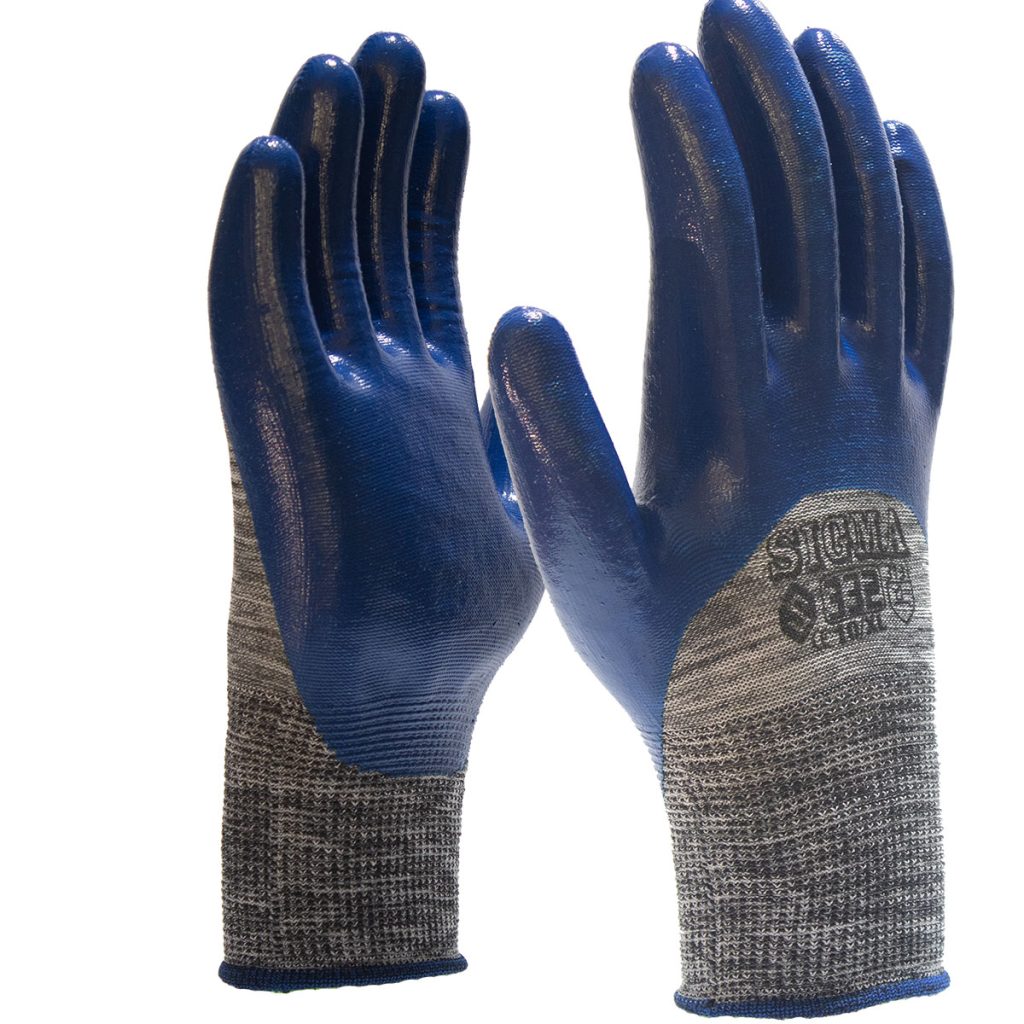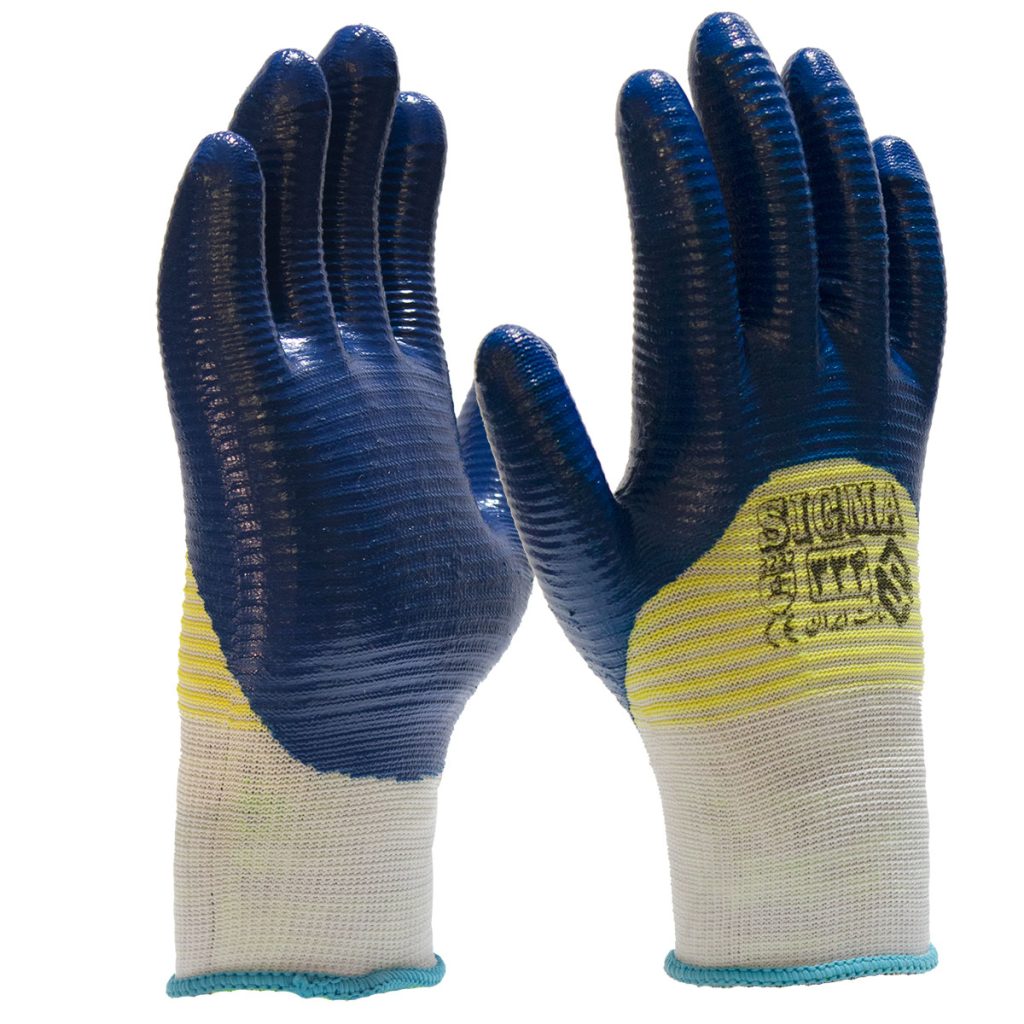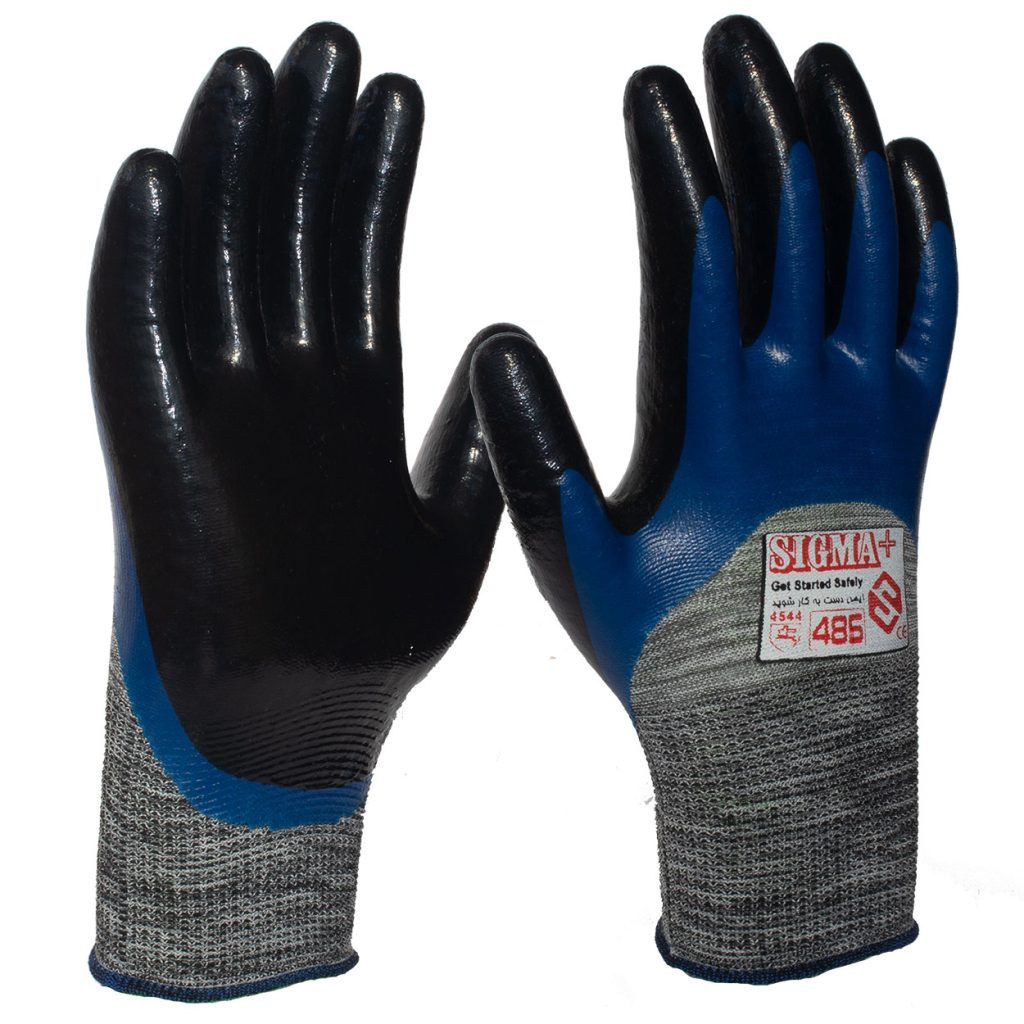Nitrile coated gloves
Nitrile coated gloves
Nitrile gloves are a great latex alternative that absorbs oil and has an outstanding grip. Nitrile micro-foam gloves are three times more puncture resistant than rubber, though not as durable. They are also breathable and water repellant.
Sandy nitrile gloves have a strong grip in wet, dry, and oily conditions. Oil will not penetrate the glove as with micro-foam. However, sandy nitrile gloves are not as breathable due to their manufacturing process.
Both types of nitrile gloves are good to use in oily areas, construction, sanitation, glass/sheet metal handling, agriculture, and automotive/aircraft maintenance. They should not be used around adhesives.
NBR’s stability at high temperatures from -40 to 108 °C )-40 to 226 °F( makes it an ideal material for aeronautical applications Its resilience makes NBR a useful material for disposable lab, cleaning, and examination gloves. Nitrile rubber is more resistant than natural rubber to oils and acids, and has superior strength, but has inferior flexibility and Tensile strength . Nitrile gloves are more puncture resistant than natural rubber gloves.





